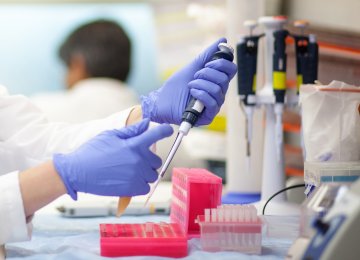The Tehran University of Medical Sciences is planning to set up the country’s biggest medical facility for burn injuries.
“The facility will be equipped with the largest research center in dermatology and skin grafting,” said Mohammad Taqi Joghataei, advisor to the health minister and faculty member at TUMS.
Speaking at the third Iranian Annual Congress on Progress in Tissue Engineering and Regenerative Medicine (PTERM) held October 19-21, he said the location of the hospital is in Tehran’s northwestern Kan District.
It should be noted that the Health Ministry had started work on the project in 2013, but suspended it due to lack of funds. Now the construction process has resumed under TUMS, but no details were available on the project cost and the deadline of its completion.
“We aim to become a regional hub for the latest achievements in tissue engineering and regenerative medicine,” Joghataei claimed, as reported by ISNA.
The congress provided a platform for clinical specialists and scientists from different specialties to share ideas and experience on the recent advancements in the field. The main themes were tissue engineering and regeneration of nervous, integumentary, skeletal, urogenital, cardiovascular, gastrointestinal, and respiratory systems.
Joghataei maintained that Iran’s progress is on par with the global benchmarks in tissue engineering, but “we should start developing products locally to accelerate the growth and development in the field through harnessing the potential of knowledge-based companies.”
Pointing to the fact that advancements in tissue engineering have earned Germany $6.5 billion in revenue, he stressed that local production must be given impetus since the global market in this particular science is expanding.
Joghataei, who is also the secretary of the neurology committee at the Iranian Council for Stem Cell Sciences and Technology, said the skin tissue bank at Tehran’s Shahid Motahari Hospital will be inaugurated in the coming week.
“The bank has the largest supply of human tissue, and will be supervised by the TUMS,” he said.
Tissue Banking
Tissue banking is as old as the use of skin grafting for skin resurfacing in burn injuries. Beneficial effects of tissue grafts led to widespread use of auto and allograft for management of varied clinical conditions like skin wounds and bone defects following trauma or tumor ablation. However, availability of adequate amount of tissues at the time of requirement was the biggest challenge that forced clinicians to find out techniques to preserve the living tissue for prolonged period of time for later use, and thus the foundation of tissue banking was laid in the early 20th century.
Harvesting, processing, storage and transportation of human tissues for clinical use is the major activity of tissue banks. Low temperature storage of processed tissue is the best preservation technique at present.
Shahid Motahari Burns Hospital established in 1969 was the first center in the country specializing in burns and works under the subset of Iran University of Medical Sciences (IUMS), the main referral center for burn injuries in the country.
The hospital’s Burns Research Center set up in 2008 has been effective in research and the promotion of the quality of patient care services. In addition, the center plans to establish a ‘donors association’ for burns patients.
The center researches acute and chronic burns, promotes modern burns therapy as well provides rehabilitation of burns patients through the proper use of traditional medicine.
In 2010, the Strategic Council of the Burns Research Center was set up. Regular meetings are held to approve research priorities, attract collaboration from other research centers and universities in the country, and formulate, adopt and implement project plans in the field.
Extensive Collaboration
The center also has close collaboration with the Organ Transplant Research Center, Royan Institute, Stem Cell Institute, Amir Kabir Polymer Technology Institute, Burns Research Center of Shiraz University of Medical Sciences, and other research centers in the country.
Its major activities are finding new treatments for burns diseases, investigating the role of cells (especially stem cells) in the treatment of burn wounds, investigating the possibility of producing skin substitutes such as artificial skin, examining ways to facilitate the healing of second degree burns, finding new treatment methods for deep burns, examining the social and psychological consequences of burn patients, and using traditional medicine to heal burns.
The country’s largest facility for burn injuries with 130 beds, the Amir-al-Momenin Hospital constructed and equipped at a cost $19 million, was inaugurated in Shiraz, capital of Fars Province in February this year. The hospital which is specialized in treating adult and pediatric burns is equipped with high-tech facilities including a skin bank.
Burns are one of the most common forms of injury in Iran, ranking seventh in a list of the top causes of disease or injury. More than 100,000 burn cases are reported annually and about 8,000-9,000 patients are admitted for treatment. Burn patients make up roughly 1-1.5% of all emergency department patients.






Add new comment
Read our comment policy before posting your viewpoints